Potřebujeme váš souhlas k využití jednotlivých dat, aby se vám mimo jiné mohly ukazovat informace týkající se vašich zájmů. Souhlas udělíte kliknutím na tlačítko „OK“.
ASTM F2554-10
Standard Practice for Measurement of Positional Accuracy of Computer Assisted Surgical Systems
Automaticky přeložený název:
Standardní praxe pro měření polohová přesnost Computer Assisted chirurgické systémy
NORMA vydána dne 1.12.2010
Informace o normě:
Označení normy: ASTM F2554-10
Poznámka: NEPLATNÁ
Datum vydání normy: 1.12.2010
Kód zboží: NS-54122
Počet stran: 11
Přibližná hmotnost: 33 g (0.07 liber)
Země: Americká technická norma
Kategorie: Technické normy ASTM
Kategorie - podobné normy:
Anotace textu normy ASTM F2554-10 :
Keywords:
computer assisted surgery, computer navigation, imageless guided surgery, infrared tracking system, optical tracking, ICS Number Code 35.240.80 (IT applications in health care technology)
Doplňující informace
| Significance and Use | ||||||
|
The purpose of this practice is to provide data that can be used for evaluation of the accuracy of different CAS systems. The use of surgical navigation and robotic positioning systems is becoming increasingly common and requires a degree of trust by the user that the data provided by the system meets necessary accuracy requirements. In order to evaluate the potential use of these systems, and to make informed decisions about suitability of a system for a given procedure, objective performance data of such systems are necessary. While the end user will ultimately want to know the accuracy parameters of a system under clinical application, the first step must be to characterize the digitization accuracy of the tracking subsystem in a controlled environment under controlled conditions. In order to make comparisons within and between systems, a standardized way of measuring and reporting accuracy is needed. Parameters such as coordinate system, units of measure, terminology, and operational conditions must be standardized. |
||||||
| 1. Scope | ||||||
|
1.1 This practice addresses the techniques of measurement and reporting of basic static performance (accuracy, repeatability, and so forth) of surgical navigation and/or robotic positioning devices under defined conditions. The scope covers the tracking subsystem, testing only in this practice the accuracy and repeatability of the system to locate individual points in space. A point in space has no orientation; only multi-dimensional objects have orientation. Therefore, orientation of objects is not within the scope of this practice. However, in localizing a point the different orientations of the localization tool can produce errors. These errors and the orientation of the localization tool are within the scope of this practice. The aim is to provide a standardized measurement of performance variables by which end-users can compare within (for example, different fixed reference frames or stylus tools) and between (for example, different manufacturers) different systems. Parameters to be evaluated include (based upon the features of the system being evaluated): (1) Location of a point relative to a coordinate system. (2) Relative point to point accuracy (linear). (3) Repeatability of coordinates of a single point. (4) For an optically based system, the range of visible orientations of the reference frames or tools. (5) This method covers all configurations of tool arrays in the system. 1.2 The system as defined in this practice includes only the tracking subsystem (optical, magnetic, mechanical, and so forth) stylus, computer, and necessary hardware and software. As such, this practice incorporates tests that can be applied to a prescribed phantom model in a laboratory or controlled setting. 1.3 This practice defines a standardized reporting format, which includes definition of the coordinate systems to be used for reporting the measurements, and statistical measures (for example, mean, standard deviation, maximum error). 1.4 This practice will serve as the basis for subsequent standards for specific tasks (cutting, drilling, milling, reaming, biopsy needle placement, and so forth) and surgical applications. 1.5 The values stated in SI units are to be regarded as standard. No other units of measurement are included in this standard. 1.6 This standard does not purport to address all of the safety concerns, if any, associated with its use. It is the responsibility of the user of this standard to establish appropriate safety and health practices and determine the applicability of regulatory limitations prior to use. |
||||||
| 2. Referenced Documents | ||||||
|
Podobné normy:
Historická
1.3.2013
Historická
15.12.2013
Historická
15.12.2013
Historická
15.12.2013
Historická
1.11.2013
Historická
1.1.2014


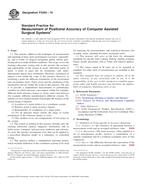
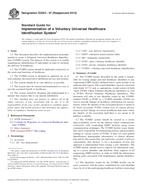 ASTM E2553-07(2013)..
ASTM E2553-07(2013)..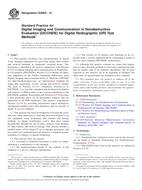 ASTM E2699-13
ASTM E2699-13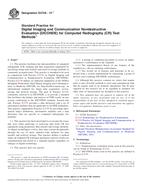 ASTM E2738-13e1
ASTM E2738-13e1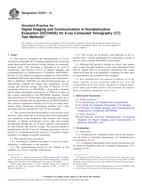 ASTM E2767-13
ASTM E2767-13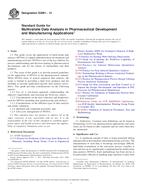 ASTM E2891-13
ASTM E2891-13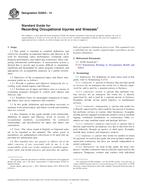 ASTM E2920-14
ASTM E2920-14
 Cookies
Cookies
